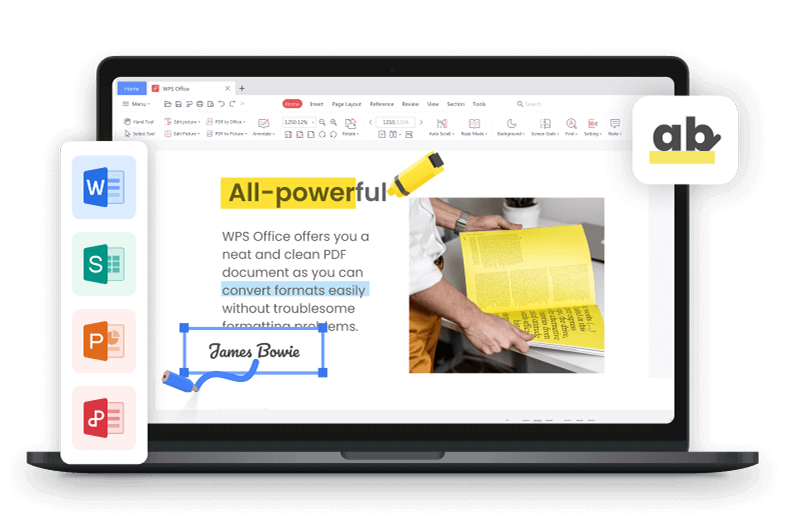Struggling with annoying “Unlicensed Product” errors or limited features in Microsoft Office? In most cases, the root cause isn’t a licensing issue—it’s an incomplete or incorrect setup.
With the Office Customization Tool, you can easily customize and configure Microsoft Office to perfectly fit your needs—whether you're setting it up for personal use or across an entire organization.
In this expert guide, we’ll show you exactly how to use the Office Customization Tool effectively to optimize your Office deployment, avoid common issues, and unlock a smoother, more powerful Office experience.
Office Customization Tool : The Smart Way to Configure Office
The Office Customization Tool (OCT) is your go-to solution for customizing and configuring Microsoft Office—especially for large organizations.
With OCT, you can easily create configuration files to control which apps and languages are installed, manage updates, and set user preferences. It’s designed to simplify large-scale Office deployments across many devices.
Once your configuration file is ready, simply use it with the Office Deployment Tool to quickly roll out your customized Office setup across your network.
Designed for large-scale deployments, the Office Customization Tool is part of the process for installing Office on hundreds or even thousands of computers. After generating the configuration files, you can integrate them with the Office Deployment Tool to deploy a customized version of Office across your network.
How to Configure MS Office Deployment Using the Office Customization Tool
Customizing your Microsoft Office deployment has never been easier with the Office Customization Tool (OCT). Here’s a quick, beginner-friendly guide to help you configure your settings, create your configuration file, and prepare for deployment using the Office Deployment Tool.
1. Deployment Settings
Step 1. Open the Office Customization Tool: Search for "Office Customization Tool" on Google and go to the Microsoft 365 Apps Admin Center.
Step 2. Set Up Products, Apps, and Languages
In the Products and Releases section:
Architecture: Choose 32-bit or 64-bit according to your system. (Tip: Check this in Control Panel > System.)
Product: Select your desired Office version, such as Office LTSC Professional Plus 2021 or other suites.
Apps: Toggle the Office apps you want to install.
Update Channel: Keep the default setting unless you have specific requirements.
Next, in the Language section:
Select the primary language for your Office suite.
(Optional) Add proofing or additional languages.
Step 3. Configure Installation and Update Preferences
In the Installation Settings section:
Keep default installation options if unsure.
In the Updates and Upgrades section:
Leave updates at default.
Choose whether to remove old Office versions.
Step 4: Licensing, Activation, and General Settings
In the Licensing and Activation section:
Select KMS if you’re using a volume license.
Leave activation settings at default.
In the General Information section:
Enter your company name or personal info (optional).
In the Application Preferences section:
Keep default settings if no special adjustments are needed.
Now, the Export dialog will open. Select the “Office Open XML Formats” option and click “OK”.
At last, make sure to tick the checkbox to agree to the terms and conditions.Finally, click the “Export” button to save the configuration file in XML format.
2. Download the Office Deployment Tool
With your configuration file ready, the next step is to download the Office Deployment Tool—a key component for deploying Microsoft Office using the Office Customization Tool (OCT).
Simple Steps:
Open your browser and search for “Office Deployment Tool.”
Click the official Microsoft link (usually the first result).
Select your preferred language on the download page, then click Download to save the Office Deployment Tool to your computer.
This tool works seamlessly with your saved configuration.xml file and is essential for automating your Office setup. Whether you’re using the office deployment tool 2025 or setting up Office for the first time, it’s a must-have for smooth deployment.
3.Extract the Deployment Files
With the files now saved, you can move them into a separate folder if you want to stay organized. Let's begin extracting the Office Deployment Tool from the file we just downloaded.
Step 1. With both files ready, right-click on the "Office Deployment Tool" in your folder to open the context menu, then click on the "Run as Administrator" option.
Step 2. The Microsoft Software License Terms dialog will open. Scroll down, accept the terms and conditions by ticking the checkbox, and then click "Continue”.
Step 3. Now, select a folder where you want the files to be extracted and click "OK".
Step 4. Click "OK" on the confirmation message to exit.
At this point, the Office Deployment configuration files will be extracted to your folder, and you are all set for the next step!
4. Execute the Command Prompt Setup
Now, we will use Command Prompt to execute the installation of the Microsoft Office suite from the files we just extracted using the Office Deployment Tool.
Step 1. Using the search bar in the taskbar, search for "Command Prompt" and click on "Run as Administrator".
Step 2. In the Command Prompt, we will copy the file path of the folder where we extracted the files. Go to the "Address bar" in the folder, and press “CTRL + C” to copy the path.
Step 3. In the Command Prompt, type "cd", then press the “Spacebar”, and then paste the file path using the shortcut “CTRL+V”. Press “Enter”.
Step 4. Now that we are in the correct folder, we need to run the setup file. Enter the following command to begin the installation:
setup.exe /configure configuration.xml
Note: "Configuration.xml" is the name of the configuration file we exported earlier. If you renamed the XML file, make sure you use the correct name.
Step 5. After entering the command, press “Enter”, and the installation will begin. This might take a few minutes to complete.
5. Verify Installation and Activation
Once the installation is complete, your Office suite will be fully operational and activated. Let's verify this:
Step 1. Open any Microsoft Office app, such as Word, on your system and click on the "Account" tab.
Step 2. In the Account tab, you will find the product details for your Office suite, confirming that it is activated and ready to use.
Tired of Complex Office Customization Tools? Discover WPS Office
While Microsoft Office and its office customization tools, they often require complex setup. From dealing with “Unlicensed Product” warnings to configuring your Office suite with the right settings, these tools can be overwhelming for many users.
If you’re looking for a simpler, faster solution, WPS Office is an excellent alternative.WPS Office provides all the essential tools for word processing, spreadsheets, presentations, and even PDFs—without the need for complicated configuration files or tools.
With WPS Office, there’s no need to worry about complex deployment processes or technical issues.You can start creating, editing, and collaborating in minutes.
Features of WPS Office
What makes WPS Office stand out as an alternative to Microsoft Office isn’t just its easy setup—it’s the familiar interface that feels instantly comfortable. WPS Office keeps things simple, offering a sleek design, essential free features, and affordable premium options for those who need more advanced tools. No steep learning curve, just smooth productivity.
Ready to explore what WPS Office can do? Let’s dive in!
All-in-One Office Suite: Instead of relying on separate applications, WPS Office integrates its tools—Writer, Spreadsheet, Presentation, and PDF—into one window, eliminating the need to switch tabs and declutter your desktop workspace.
Cloud Storage: WPS Office not only provides its own WPS Drive for easy access to files anytime, anywhere, but also allows users to connect other cloud services like OneDrive and Google Drive, making file access even more convenient.
Advanced PDF Tools: Although often overlooked, PDF tools are essential in office, school, and professional settings. WPS Office includes advanced PDF features to ensure a smooth workflow for users who rely on these tools.
How to Download WPS Office
I’ve mentioned before how easy it is to set up WPS Office on your system, but if you haven’t tried it yet, here’s how simple it is. Whether you're using Windows, macOS, or Linux, you can easily download and install WPS Office in just 3 simple steps:
Step 1. Go to the WPS Office website in your browser and click the "Download" button found at the centre of the page.
Step 2. To install the WPS Office suite, open the downloaded file by double-clicking it.
Step 3. When the installation finishes, the WPS Office suite will be ready for use.
Quick FAQs: Office Customization & Deployment Tools Explained
1. What Is the Office Customization Tool (OCT) and How Does It Work?
The Office Customization Tool (OCT) is a Microsoft solution designed for IT admins and organizations to easily customize and deploy Microsoft Office. It allows you to create a configuration file that controls Office installation settings—such as which apps and languages are installed, update channels, and licensing options.
This tool streamlines large-scale Office deployments, ensuring fast, consistent, and error-free setups.
2. Can I Customize Specific Apps Using the Office Configuration Tool?
Yes! The Office Configuration Tool lets you pick exactly which Office apps you want to install—whether it's Word, Excel, PowerPoint, or others.
This flexibility allows you to exclude unnecessary apps and fully customize your Office installation to match your needs.
3. How Can I Fix Issues During Office Deployment with the Office Deployment Tool?
If you face issues while deploying Office with the Office Deployment Tool and your configuration file, here’s what you can do:
Double-check your configuration settings for typos or missing fields.
Review the setup logs for detailed error messages.
Restart your system to clear temporary issues.
Make sure you’re using the latest version of the Office Deployment Tool.
If the problem continues, visit Microsoft’s official support for additional help.
Switch to WPS Office: Easy, Affordable, and Ready to Use
WPS Office is a simple, affordable alternative to Microsoft Office and the Office Customization Tool. It lets you create, edit, and manage documents, spreadsheets, and presentations—without the need for complex setup or licensing.
With WPS Office, you can get started in minutes and enjoy a smooth, powerful experience for work or personal projects.




